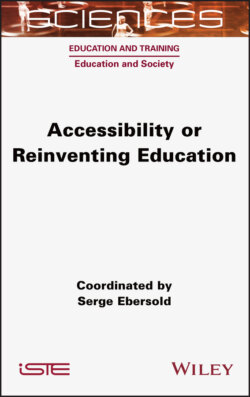Читать книгу Accessibility or Reinventing Education - Группа авторов - Страница 20
1.3.3. A corrective approach to accessibility aimed at restoring school legitimacy
ОглавлениеA corrective approach to accessibility is intended to modify the school environment on a case-by-case basis in view of the difficulties encountered by individuals in order to restore their ability to carry out regular activities under normal conditions. In most countries of the European Union, this corrective approach to accessibility targets learners whose difficulties at school are the result of a disability, or a medically or psychologically disabling health condition. In France, it concerns pupils identified under provisions of the Act of February 11, 2005, on the participation, integration and citizenship of disabled persons, while in Finland it concerns pupils for whom the mere intensification of support by the school is not considered conclusive proof. Accommodations and supports are unique, specialized and dedicated adjustments to a individual’s support needs. These are identified by a multidisciplinary team including educational, socio-educational and medical personnel, and formalized in an “individual education plan” developed by the maisons départementales des personnes handicapées (MDPH, or regional homes for persons with disabilities) and validated by the commissions des droits et de l’autonomie (commissions on rights and autonomy) (Ebersold et al. 2017). The purpose of these supports is supplementary when they concern tasks that the pupil is deprived of owing to his or her particularity. It is augmentative when their ambition is to enable the pupil to do more, and to perform the tasks required of them faster and better. In most European countries, these facilities and supports are available in the form of adapted teaching materials (books, etc.). They also consist of human aids responsible for improving the autonomy of pupils, their learning and their social registration, through educational assistants; they also mobilize assistance techniques such as the addition, a posteriori, of ramps at entrances or the provision of computers or specific materials (Stephanidis 2009).
The imperative of accessibility correlates the personalization of practices to making practices ergonomic. This must guarantee access to resources and learning processes that influence students’ academic results through an articulation of differential approaches to accessibility: the universal approach to accessibility makes pedagogical flexibility the means to prevent any need for further assistance by organizing teaching practice around profiles, needs and learning beyond the act of teaching (CNED 2018); the integrated approach to accessibility makes pedagogical adjustment and adaptations the means of preventing the risks of failure and drop out inherent in school heterogeneity without calling into question the content of teaching; and the corrective approach to accessibility makes it possible to support pupils through the intervention of personnel specialized in a type of deficiency or disorder and can lead, in some countries, to a questioning of the content of teaching.
